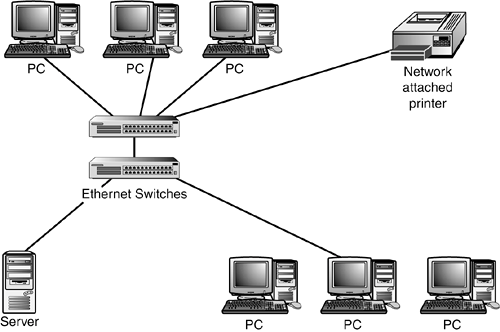This tutorial reviews general network considerations such as the various topologies used on today's networks, LANs, PANs, and WANs, and the IEEE standards.
LANs, WANs, and PANs
Networks are classified according to their geographical coverage and size. The two most common network classifications are local area networks (LANs) and wide area networks (WANs).
LANs
A LAN is a data network that is restricted to a single geographical location and typically encompasses a relatively small area such as an office building or school. The function of the LAN is to interconnect workstation computers for the purposes of sharing files and resources. Because of its localized nature, the LAN is typically high speed and cheaper to set up than a WAN. Figure 1.1 shows an example of a LAN.

Local area network